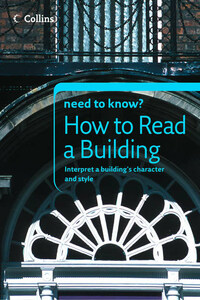Architecture is everywhere: it is part of our lives, and its continuing development is a central theme in the history of mankind. Learning to read a building is the route to understanding a major part of our cultural inheritance.
must know
Great architects
The greatest architects of the western world created buildings that are not only international icons but have also come to symbolize the culture of a city and its people. London would be unthinkable without Sir Christopher Wrenâs St Paulâs Cathedral, Sydney without Jørn Utzonâs opera house, or Paris without Charles Garnierâs opera house and Hector Guimardâs art nouveau Metro stations.
Whether you live in a small flat or a detached house, you can find traces of architectural history all around you. Architecture is not just about style, although historical styles have made buildings memorable and beautiful for hundreds of years. Architecture is the sum of many small parts, some as small as a door or a window, as well as being the general term for the study of why people choose to build the way they do. Learning to read buildings starts with enjoying architectural details and discovering how much pleasure can be derived from looking around you and understanding your own environment.
The first thing we can all do when embarking on a discovery of architecture is to try to analyse what we see in a room we know well. Are the doors flush or panelled? How do the windows open? Is there a plaster cornice, or a decorative skirting board? Is there a consistent pattern to the features inside the house? How does the layout of the rooms work? Even if these are the same as they are in the flat or house next door, they will very probably make a statement about what sort of home we live in, and how that home relates to the story of architecture as a whole. After all, an outline of architectural history will only make sense if it is broad enough to include the majority of buildings we all live and work in.
With experience and enthusiasm it becomes possible to classify visual ideas into clear stylistic traditions which govern the form of every part of a building from its general outline to its detail. These common patterns are the major historical traditions, in particular the âclassicalâ and the âgothicâ; both styles have roots in a series of important historical buildings which have long influenced architects and artists, and anyone interested in the subject must know what they are.
Buildings are not only about style, however: they are also a record of the way in which people have lived and worked in the past. The choice of a building material, or a type of chimney or roof tile, may be related to local resources. The way in which craftsmen have worked and finished those materials is often a sign of the natural characteristics of the materials themselves. To some extent therefore one can say that when a region of a country has developed a very distinct way of building because of the types of materials and skills prevalent there, we have an example of a further and unique type of style. Indeed, some of our most memorable buildings have resulted from the combination of a local style with one of the great international traditions of formal architecture. Your own home is unlikely, of course, to satisfy your own curiosity. The centre of your nearest town, however, will almost certainly bear witness to the major traditions of architecture. It is quite possible that there may be a church or a public building there that testifies to an important phase of national architecture. At all events, you will soon start to uncover fascinating aspects of architectural style and history from the buildings that you pass every day.
must know
The architectural profession
The present-day profession of architecture in Britain developed in the early nineteenth century. Until that time, the people who designed buildings were builders or carpenters, engineers, surveyors, or simply gentlemen â and lady â amateurs. Sir John Vanbrugh, the designer of Blenheim Palace, had been a professional soldier and playwright before he started calling himself an architect.








